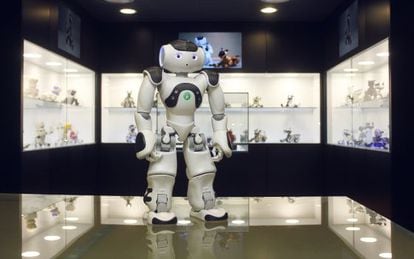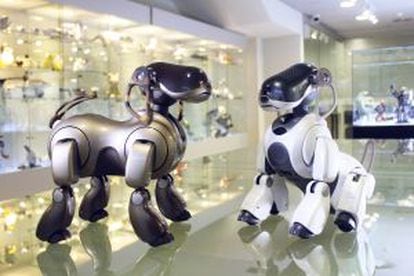R2D2’s Madrid home
The city’s Robot Museum boasts fascinating and rare items from the history of robotics

A reminder of Isaac Asimov’s First Law of Robotics – “a robot may not injure a human being” – followed by a bunch of little humanoids with blue chests and flashing lights dancing to Gangnam Style: the opening act at The Robot Museum in Madrid heralds a visit that is full of surprises and trips back to a futuristic past.
Just a year after it opened, the museum has already become one of Europe’s most prominent centers devoted to the history of robotics.
It boasts the world’s second-largest collection of Sony Aibo dogs, nearly 50 of them, each one costing around €6,000. It also houses such treasures as NAO, one of the most advanced androids in the world, which is used almost exclusively by researchers and educators. This particular model performs tai chi for visitors under the orders of museum guide Lucía.
“Robotics is a new form of learning through games, and that is why we organize workshops for people of all ages, whether children or adults,” says Fernando Navarro, of Juguetrónica, the company that runs the museum, as well as Madrid’s largest robot store – the museum is located on the same premises at Calle de Alberto Aguilera, 1.

The center also serves to showcase the history of sci-fi cinema. An ongoing project involves building an exact replica of R2D2, the droid from the Star Wars saga, which will weigh 200 kilograms once completed.
Other featured creatures include Emros, the world’s smallest robot, which is made up of 98 pieces despite only being the size of a thumbnail; there are also machines created using Lego’s Mindstorms robotic kits that, much to the amazement of onlooking children, can complete a Rubik’s Cube in a minute and a-half.
“What children like the most are the PLEOs, dinosaur-shaped robots that react to being stroked,” says the guide. “You can feed them and they can even get sick. They take on whatever personality you want them to have.”
There are also unique items from the 1980s, such as one of the first robotic arms ever made, as well as a Packbot, one of the military robots that did field work in Iraq and went into the Fukushima nuclear plant right after the tsunami.
The Robot Museum. C/ Alberto Aguilera, 1, Madrid. Guided tours Tuesday to Friday (unaccompanied visits are not allowed) at 1pm, 5pm and 8pm. Reservations accepted half an hour in advance. Admission: adults €4, students €3, families with small children €6.










































